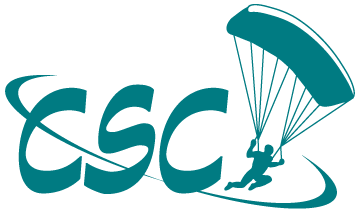We’re pretty sure that if you’ve come as far as checking out our website and reading our blog then you’ve got a pretty solid interest in making a skydive. You’ve probably even done a bit of research into the safety aspects of the sport and have seen the statistics that tell you just how much more dangerous it is to get into your car each day than it is to make a tandem skydive. But… you’ve probably also thought about what might happen if things don’t go as planned on a jump and may have even come across the term “cutaway”. You’re not really sure what it means, but you’re also relatively confident you don’t like it. The term inspires images of World War II movies with a paratrooper doing battle with his malfunctioning parachute as he plummets to the ground, but the reality of a malfunction in modern skydiving is much less dramatic to say the least.
So, in order to explain the reality of a malfunction and how it is handled, here’s a super basic idea of how a modern skydiving “Rig” works. Each rig, either tandem or sport has 4 basic components:
Container
The container is exactly what it sounds like. It is the backpack worn by a jumper that contains all other components, as well as the harness system that attaches either the solo jumper or tandem pair to the rest of the system.
Main Parachute
The main parachute, or “canopy” as it’s more commonly called is exactly that. It’s the parachute that is primarily used. It is located in the bottom half of the container and is connected via a quick release system called a 3-ring.
Reserve Parachute
The reserve parachute is the canopy we put to use if for any reason the main has a problem. It is located on the top half of the container and is attached directly to the harness system on what is called the reserve risers.
AAD
The AAD or Automatic Activation Device is a barometric sensitive computer system that knows its altitude and speed during a skydive and will automatically begin the reserve deployment sequence at a predetermined altitude if required.
So now that you understand the basic workings, we can explain how we handle the dreaded cutaway! The fact is, modern parachutes really want to work, and almost every time they do so without any issues at all or with something minor and easily dealt with; the most common of these being line twists, which are exactly what they sound like. It’s a simple problem that even student skydivers handle without issue.
If a problem arises that isn’t as easy to fix, your instructor will assess the situation by asking themselves a few simple questions. “Is this parachute the shape it’s supposed to be? Is this parachute controllable or is it doing its own thing? Do I think I can land this parachute safely?” If the answer to these questions is no, then your instructor is going to put their years of training to work! Remember that 3-ring quick release system we talked about? Well now is when it’s going to be put to use!
- The first handle used on your rig is to open your main parachute and it’s located on the bottom of the container, but that’s already been used and it’s time for the reserve.
- The next handle your instructor puts to use is what is called the “Cutaway Handle”, and It’s located on the upper right side of the harness and sits around your instructor’s chest height. When they pull this handle, it allows that 3-ring system to release the main canopy, putting the tandem briefly back into freefall.
- Handle number 3 is the one you’ve been waiting to hear about! This is the “Reserve Handle”, and it’s located on the upper left side of the harness at the same height as the cutaway. When your instructor uses this one, it pulls the pin on the reserve parachute, deploying the canopy that you’ll now use for the rest of your skydive.
So what just happened? Well, your instructor deployed your main canopy and quickly determined that there was an issue that required them to use the reserve parachute. When they pulled the cutaway handle, you went back into freefall because they released the main canopy and you fell away from the problem. Your instructor then pulled the reserve handle which deployed your reserve canopy, halting your freefall and putting you happily under the parachute that will take you safely to the ground.
And that’s about it! Although they don’t happen all the time, malfunctions can and do occur. There are variations on the theme of course, but what we’ve just talked about is pretty much how they’re dealt with each and every time. Our Instructors here at Chicagoland Skydiving Center are highly trained and qualified both in teaching people how to skydive on their own as well as taking you for your tandem skydiving experience. If you’d like to get a really detailed explanation don’t hesitate to ask your instructor all about the parachute system.
Blue Skies and see you soon!


